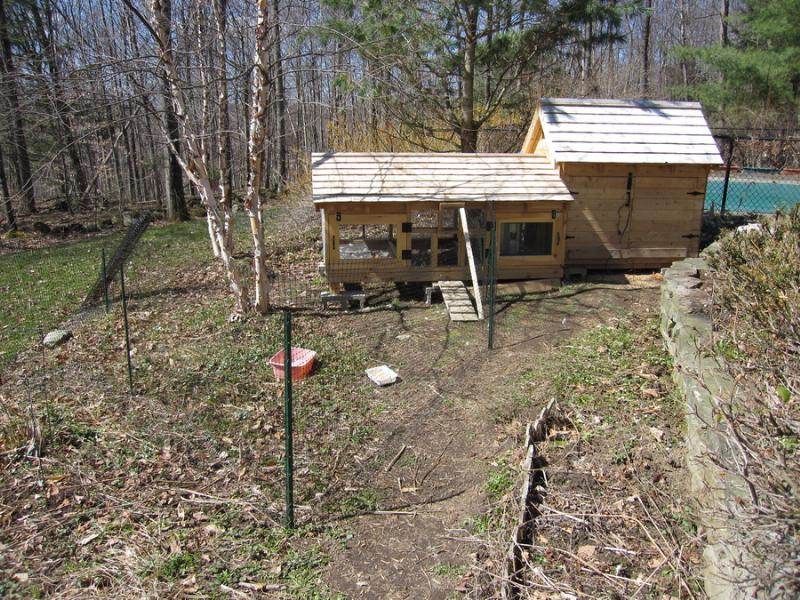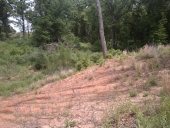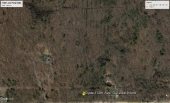
 4
4









My project thread: http://www.permies.com/t/20399/projects/Maine-Master-Plan








 1
1




 1
1




Moderator, Treatment Free Beekeepers group on Facebook.
https://www.facebook.com/groups/treatmentfreebeekeepers/













My project thread
Agriculture collects solar energy two-dimensionally; but silviculture collects it three dimensionally.




Ghislaine de Lessines wrote:
Predator pressure varies from year to year. Weasel family members, raptors, bobcat, and bear have all been observed near the house. Fox and coyotes have been observed nearby. Other wildlife includes moose (nearby), deer, turkey, squirrel, chipmunk, and mice.
My project thread
Agriculture collects solar energy two-dimensionally; but silviculture collects it three dimensionally.




Ghislaine de Lessines wrote:According to this map our land only has an "intermittent" stream running through it.
My project thread
Agriculture collects solar energy two-dimensionally; but silviculture collects it three dimensionally.




Cj Verde wrote:I think gambions are a terrible idea for Vermont!!!
I read about a guy who did something like this, trying to slow flow in a seasonal stream. I think he put a bunch of cement pilings in and maybe it worked great for 30 years and then hurricane Irene came... The pilings and boulders floated like nothing and took out a bridge!!! He probably didn't realize the implications of what he said. I never heard any follow up story but he could certainly be held responsible for the cost of that bridge.




Ghislaine de Lessines wrote: Last Memorial Day there was such a storm that some of the water off our property washed out the culvert under our driveway at the town road and then took out the next three driveways as well. It'd be awfully neighborly to capture some of the water to prevent a reoccurrence, don't you think?

My project thread
Agriculture collects solar energy two-dimensionally; but silviculture collects it three dimensionally.




Ghislaine de Lessines wrote:
I'm interested in eventually getting some Livestock Guardian Dogs eventually but my husband isn't interested in getting anything that big. He just wants a family dog like a collie or something.
My project thread
Agriculture collects solar energy two-dimensionally; but silviculture collects it three dimensionally.








Ghislaine de Lessines wrote:Anyone know what these mushrooms are? Too bad my husband and I aren't fond of mushrooms!


My project thread
Agriculture collects solar energy two-dimensionally; but silviculture collects it three dimensionally.




Ghislaine de Lessines wrote:There's another tree like this near the bridge over the ditch pictured in the next two pictures.

My project thread
Agriculture collects solar energy two-dimensionally; but silviculture collects it three dimensionally.




Cj Verde wrote:
The goal is generally to keep that water on your property for as long as possible. Making it take the longest path possible. At least three strategies would give you the most resilience. One of the strategies Geoff mentions is using a reed bed as the last stop gap before the water leaves the property. A couple of swales higher up would go a long way towards capturing that water.
The tricky thing in Vermont is to do that and still survive mud season.








Ghislaine de Lessines wrote:
We have a spot where I have seen that rainbow of floating oil that's made me a bit nervous.
My project thread
Agriculture collects solar energy two-dimensionally; but silviculture collects it three dimensionally.








 1
1


































 1
1




Ghislaine de Lessines wrote:One raised bed has been planted with the following sections:
Another unknown







Ghislaine de Lessines wrote:
Unknown if anyone wants to ID














 so I also got a Japanese primrose for the marshy area next to the driveway. They had an interesting variegated willow that I would have liked to have come home with but it'll get to tall for under the powerline. I know I can cut it back but I'm concerned about how much it will spread, adding to the work of coppicing. :/ I think we may clear our some trees south of the pond, in which case I'd like a bit of a privacy hedge since the neighbor's house is in that direction. There's a ditch next to the logging road that might be a perfect place for willow. I'd love to have some on hand for trellis building, etc.
so I also got a Japanese primrose for the marshy area next to the driveway. They had an interesting variegated willow that I would have liked to have come home with but it'll get to tall for under the powerline. I know I can cut it back but I'm concerned about how much it will spread, adding to the work of coppicing. :/ I think we may clear our some trees south of the pond, in which case I'd like a bit of a privacy hedge since the neighbor's house is in that direction. There's a ditch next to the logging road that might be a perfect place for willow. I'd love to have some on hand for trellis building, etc.




Ghislaine de Lessines wrote:Went with my mom to a nursery today that has pond plants. Came home with a water lily and some free duckweed.
My project thread
Agriculture collects solar energy two-dimensionally; but silviculture collects it three dimensionally.




Ghislaine de Lessines wrote:I think we may clear our some trees south of the pond, in which case I'd like a bit of a privacy hedge since the neighbor's house is in that direction. There's a ditch next to the logging road that might be a perfect place for willow. I'd love to have some on hand for trellis building, etc.
My project thread
Agriculture collects solar energy two-dimensionally; but silviculture collects it three dimensionally.




Cj Verde wrote:
Ghislaine de Lessines wrote:Went with my mom to a nursery today that has pond plants. Came home with a water lily and some free duckweed.
Give the nursery a plug so other Vermonters can visit. I went to some place (Horford's?) a few weeks a go because I recognized the name from an ad at the bottom of Permies! I told them that too.








Ghislaine de Lessines wrote: Is it bats I need to encourage to take care of the mosquitos?
- Had a great walk through the woods with a forester and the owner of Vermont Edible Landscapes to get an idea of what needed to be done to meet the Land use requirements and what we could do to encourage permaculture within those limitations. I should be getting a map soon with the results of that discussion.
I attended a talk today at the UVM Horticultural Farm by Marijke Niles, the owner of Marijke's Perennial Gardens Plus on her favorite Perennial Native Plants that grow well in Vermont...
- I also came home with a list of her favorite natives ...
My project thread
Agriculture collects solar energy two-dimensionally; but silviculture collects it three dimensionally.




Cj Verde wrote:
Ghislaine de Lessines wrote: Is it bats I need to encourage to take care of the mosquitos?
& fish
Cj Verde wrote:
Ghislaine de Lessines wrote: - Had a great walk through the woods with a forester and the owner of Vermont Edible Landscapes to get an idea of what needed to be done to meet the Land use requirements and what we could do to encourage permaculture within those limitations. I should be getting a map soon with the results of that discussion.
Are you in Current Use now? If so, you have to renew the plan every 10 years anyway. I did mine in '09 - before I was all gung ho permaculture. I'm trying out some things on the land not in the plan and I think the plan will change quite a bit when I renew it.
Cj Verde wrote:
Ghislaine de Lessines wrote: I attended a talk today at the UVM Horticultural Farm by Marijke Niles, the owner of Marijke's Perennial Gardens Plus on her favorite Perennial Native Plants that grow well in Vermont...
- I also came home with a list of her favorite natives ...
Do tell!




My project thread
Agriculture collects solar energy two-dimensionally; but silviculture collects it three dimensionally.





|
Can't .... do .... plaid .... So I did this tiny ad instead:
permaculture and gardener gifts (stocking stuffers?)
https://permies.com/wiki/permaculture-gifts-stocking-stuffers
|








